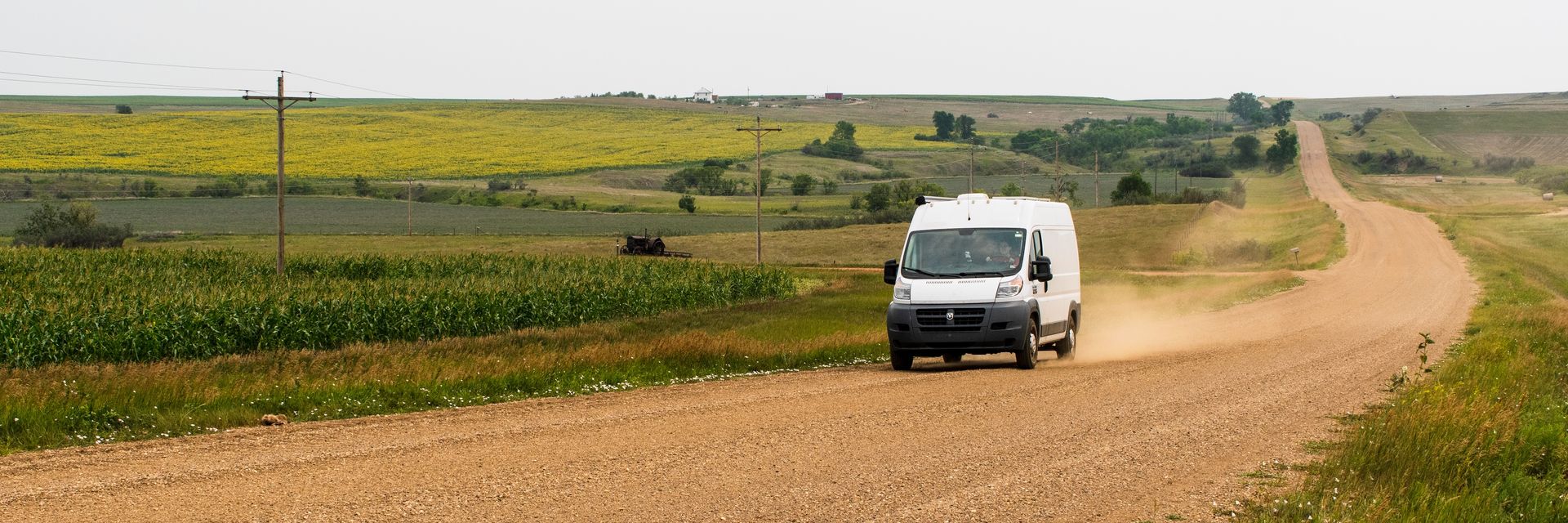Tourism is available in our own backyard. Some driving may be required.
◊
The gravel road crunches underfoot, with Interstate 94 reduced to the sound of a whistle carrying across the summer air. From the edge of the road to the edge of sight, green and khaki-colored grasses roll up and down. They’re waves on an ocean, dotted with shrubs and lines of barbed wire. From cruising altitude, these plains are nothing more than a brown smear tinted blue by the curved glass of an airplane window. At eye level, they breathe.
“Flyover states” is a pejorative term given to the section of the United States commonly seen from far above. Attributed to coast-to-coast airline passengers, the term is associated with an afterthought of American tourism. The places you see while going to where you want to be.
While the borders of “flyover country” are debated, it’s commonly attributed to regions like the American Midwest and the Great Plains. They’re prone to being missed by American and international travelers, popping into view every four years when presidential candidates visit roadside diners.
This section of the U.S. commonly deemed forgettable offers unforgettable places, as long as you’re willing to see them from ground level.
Marvel at the grandeur of the western U.S. -- and maybe choose a promising roadtrip destination -- while watching this sumptuous MagellanTV series.
What American Places Draw the Most Tourists, and Why?
According to the U.S. International Trade Administration, these are the top five most-visited states by international travelers.
- New York
- Florida
- California
- Nevada
- Texas
Playing a game of word association, you might pull together a broad snapshot of the American experience as viewed by people outside the U.S: Times Square, Disney World, the Hollywood Sign, the Las Vegas Strip, and Texas barbecue.
When looking at what motivates people to travel, the middle section of the U.S. is often defined by what it doesn’t have, instead of what it does. There’s no ocean to swim in, and little by way of mountains to climb until you get to the Rockies. There’s no New York pizza or San Diego tacos. But a trip to Middle America doesn’t have to be defined by the same measures of trips to the coasts.
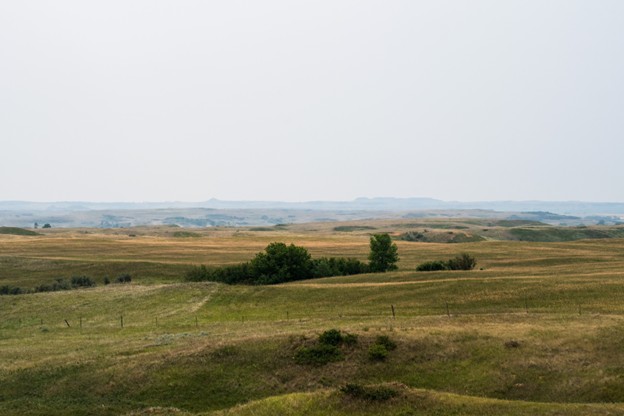
The Great Plains outside of Bismarck, North Dakota
Flying To, Not Over
Middle America, or the “Heartland” as some refer to it, has long been entwined with the open road. Route 66, stretching from Chicago to Los Angeles, highlighted a period of the 1940s through 1960s where Americans vacationed on the highway of what became known as “flyover country.” Car ownership was flourishing, and air travel was still expensive. Roadside attractions and motels lined the 2,448-mile (3939-kilometer) route, as communities vied for tourism dollars.
The 1950s brought jet engines to civilian aircraft, and air travel more than quadrupled by the 1970s. This began a shift in how Americans vacation, with the tourism industry becoming a game played through the sky.
According to International Trade Administration statistics, North and South Dakota are ranked 51st and 47th, respectively, for drawing overseas visitors, lagging behind U.S. territories like Guam (13th) and Puerto Rico (30th). Planted right in a central point of the contiguous United States, far from major cities, the Dakotas struggle with accessibility more than the coastal states.
The Dakotas don’t have a major international airport, like the states higher on the list. Sioux Falls Regional Airport, the busiest of the two states, saw 1.4 million travelers in 2024. Atlanta’s Hartsfield-Jackson International sees as many in only five days. The small volume of flights means there are fewer arrivals from elsewhere in the country, pushing would-be visitors into connecting routes. The more moving parts in a trip by air, the less likely people will take it over other options. This pushes most Dakotas tourists to travel by car, a frustrating proposition when it comes to balancing time with vacation days.
But for those who overcome these challenges, they’ll see things that’ll have them talking about it long after the trip is over. Here are some promising destinations for those who get out into Middle America.
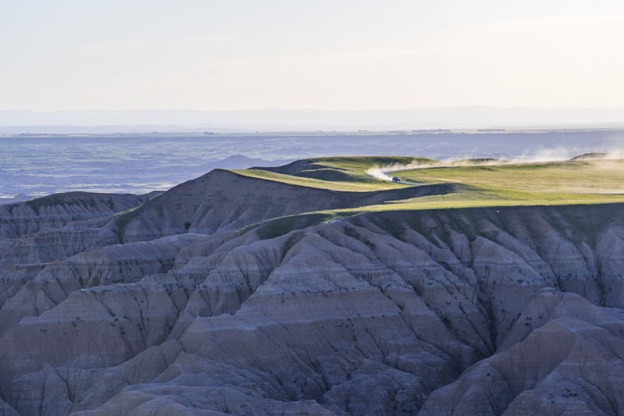
Dusty roads and cliffs of Badlands National Park
South Dakota
Most National Parks pull you in from afar, mountains towering as you approach. For Badlands National Park in southwestern South Dakota, it’s the opposite. Badlands is marked by how the ground gives way in front of you. Access roads wind past fields of prairie dogs, opening up to wide views of the pinnacles and buttes that give shape to the area. Unlike the greens and beige of the grasslands, the rock brings pinks and reds more typically associated with the Southwest.
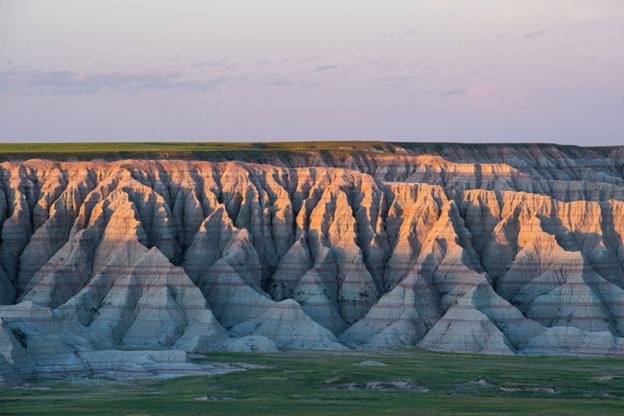
Sunset at Badlands National Park
Descending through the sandstone feels like a trip to another planet, with only street signs and parked cars reminding us of our place on Earth. Archaeology and geology fans are known to frequent the park, since its history of rocks and dinosaur bones leaves plenty to talk about while passing through.
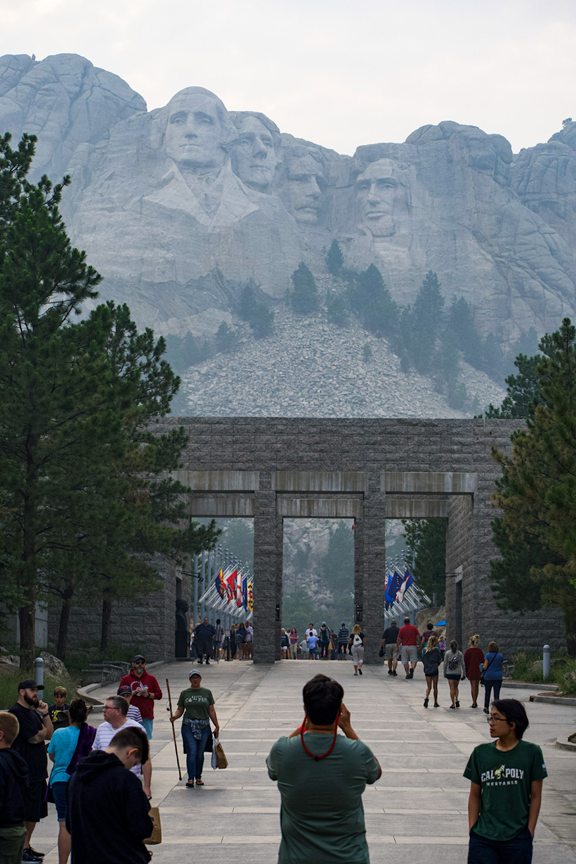
Mt. Rushmore visitors
No more than two hours west of Badlands National Park are the Black Hills. An isolated mountain range, they are geographically distinct from the Rocky Mountains to their west. They rise from the prairie, pulling the eye skywards after hours of gentle hills on I-90. Home to sites like Mt. Rushmore, the Crazy Horse Memorial, and the Sturgis Motorcycle Rally, the region offers a mountainside air that stands out among the Great Plains.
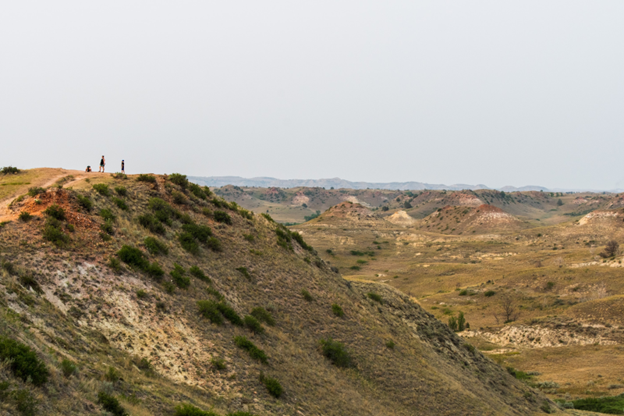
Theodore Roosevelt National Park
North Dakota
In the western reaches of North Dakota you find Theodore Roosevelt National Park, the only national park named after a singular person. Encompassing over 70,000 acres, the wildlife refuge is a former hunting ground of the namesake president of the United States.

The bison herd of Theodore Roosevelt National Park
The park is home to a herd of bison, an animal hunted to near-extinction during the era of westward expansion in the 1800s. They graze in the grasses between the multicolored pinnacles. Some adults grow bigger than a car, and visitors to the park are advised to keep their distance.
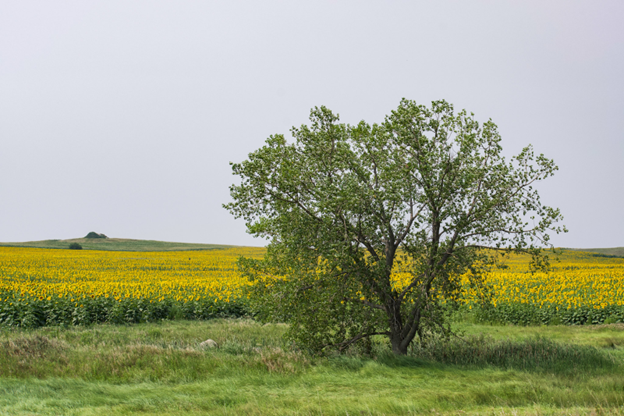
Sunflower field in North Dakota
North Dakota is one of the largest growers of sunflowers in the U.S. In August, entire hillsides can be covered in their distinctive yellow. The sunflower bloom offers an autumn experience akin to “leaf peeping” in other parts of the country; and this is in an area known for having few trees.

School route in Emporia, Kansas
Kansas
Basketball, oil platforms bobbing under a big sky, a tornado chasing Dorothy and Toto in The Wizard of Oz. Kansas can often be reduced to a caricature of itself – the state you endure from behind the wheel on a cross-country road trip. For some, a few miles of landscape on either side of I-70 is all they’ll see.
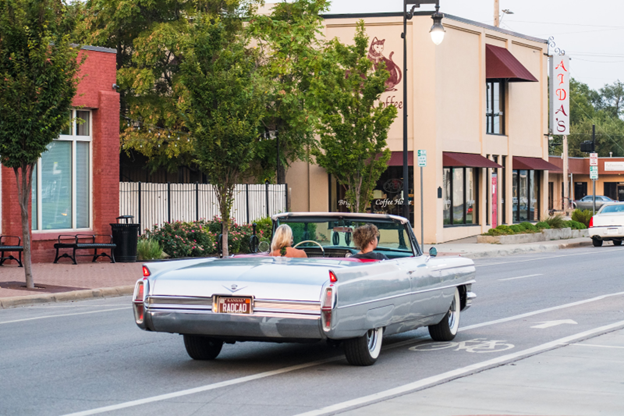
A vintage Cadillac convertible in Wichita, Kansas
But to see Kansas isn’t just to see grain silos and cattle, it’s walking among the people who live there. Coastal visitors might struggle to think about life without a quick drive to the beach, but out in Kansas you have the kind of people happy to live over 1,000 miles from the Atlantic or Pacific.
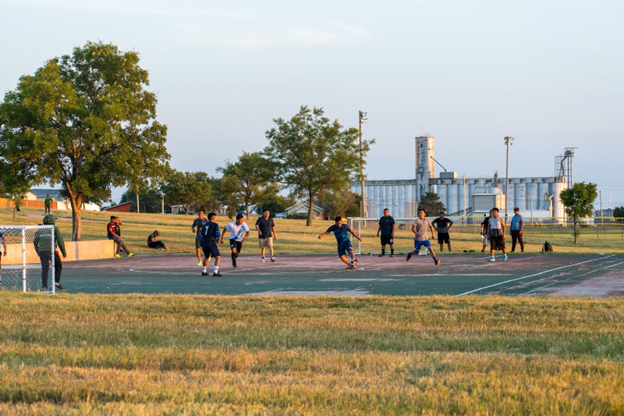
Evening soccer in Dodge City, Kansas
On the coasts, towns and cities get blurred with a near-endless suburban sprawl that lies in between them. Strip malls, chain restaurants, and big box stores make a connective tissue that links communities to each other. But in Kansas, towns and cities have more clearly defined edges, making them islands on a great grass sea. If your town has only 200 residents, with 15 miles of corn in every direction, you’re likely to try and work things out with your neighbors.

The Flint Hills of Emporia, Kansas
East of Wichita, the landscape of Kansas begins to undulate again. The Flint Hills region wrinkles most of eastern Kansas, providing a backdrop for one of the most popular bicycling events in North America. Unbound Gravel is a one-day race on the dirt roads outside Emporia, bringing around 5,000 riders into this quiet slice of eastern Kansas. Over the course of the competition, racers in the 200-mile event ride enough of these hills to log 12,000 feet (3,657 meters) of elevation gain by the end of the day. The landscape is anything but flat.

I-85 roadside, South Dakota
Changing How We Think About Flyover States
In Barbra Kingsolver’s novel, The Bean Trees, she contrasts the mountainous landscape of Kentucky with the supposed barrenness of the Plains, writing, “In Kentucky you could never see too far, since there were always mountains blocking the other side of your view, and it left you the chance to think something good might be just over the next hill.” The passage then goes on to describe a loss of hope provoked by so much open space. This kind of stress has been felt by sailors at sea, a phenomenon quite similar to the flatness of the Great Plains.
In order to thrive while visiting a state you typically fly over, a shift in mindset is necessary. A trip to Nebraska will be much different than a trip to Seattle. Getting to Seattle can be thought of as a vertical experience: flying in, focusing on the nucleus of the city, and then flying out. Visiting Nebraska, by contrast, is a horizontal experience. A trip needs horizontal movement somewhere, to place yourself in the vastness of the Great Plains. In a city like Seattle, you might see the blocks around you, or a glimpse out into the bay. But in flyover states, the immensity of the space is measured by how far you can see in any direction. You don’t feel small compared to a skyscraper or mountain; you feel small based on the amount of space between you and the horizon.
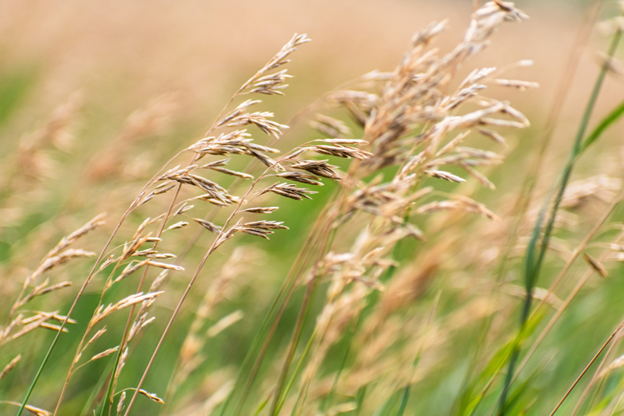
Great Plains grasses
In the Heartland, accessibility of air travel and long driving distances can be challenging for people not used to them. But what Middle America does offer is a travel experience unlike those found on the coasts. It’s no better or worse, but different.
The landscape is quieter, people walk more slowly, and your car will make fewer turns than you’re used to. This experience can be rewarding in unexpected ways. Instead of trying to unwind at a crowded beach, you could disconnect by taking a walk among the fields of grain. Whether it be a trip to an underrated national park or a few scoops of sweet corn ice cream in Omaha, flyover states are at their best when you’re standing in them.
Ω
Travis Norman is a writer and photographer, focusing on travel, cycling, and tabletop gaming. Originally from the Hudson Valley of New York, he now resides in the Upper Peninsula of Michigan. He can be found on Instagram at @travis_norman.
Title Image: Driving Through Sunflower Fields Outside of Bismarck, North Dakota. This and all other photographs in the article were taken by the author, Travis Norman.
